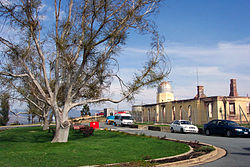Stromlo | |
|---|---|
 Interactive map of Stromlo | |
| Coordinates: 35°18′32″S149°59′20″E / 35.309°S 149.989°E | |
| Country | Australia |
| State | Australian Capital Territory |
| Gazetted | 12 May 1966 [1] |
Stromlo is a district in the Australian Capital Territory in Australia. It is situated adjacent to Weston Creek and the Molonglo Valley. The district was the location of the Stromlo Forest pine plantation until its destruction by the 2001 and 2003 Canberra bushfires.

